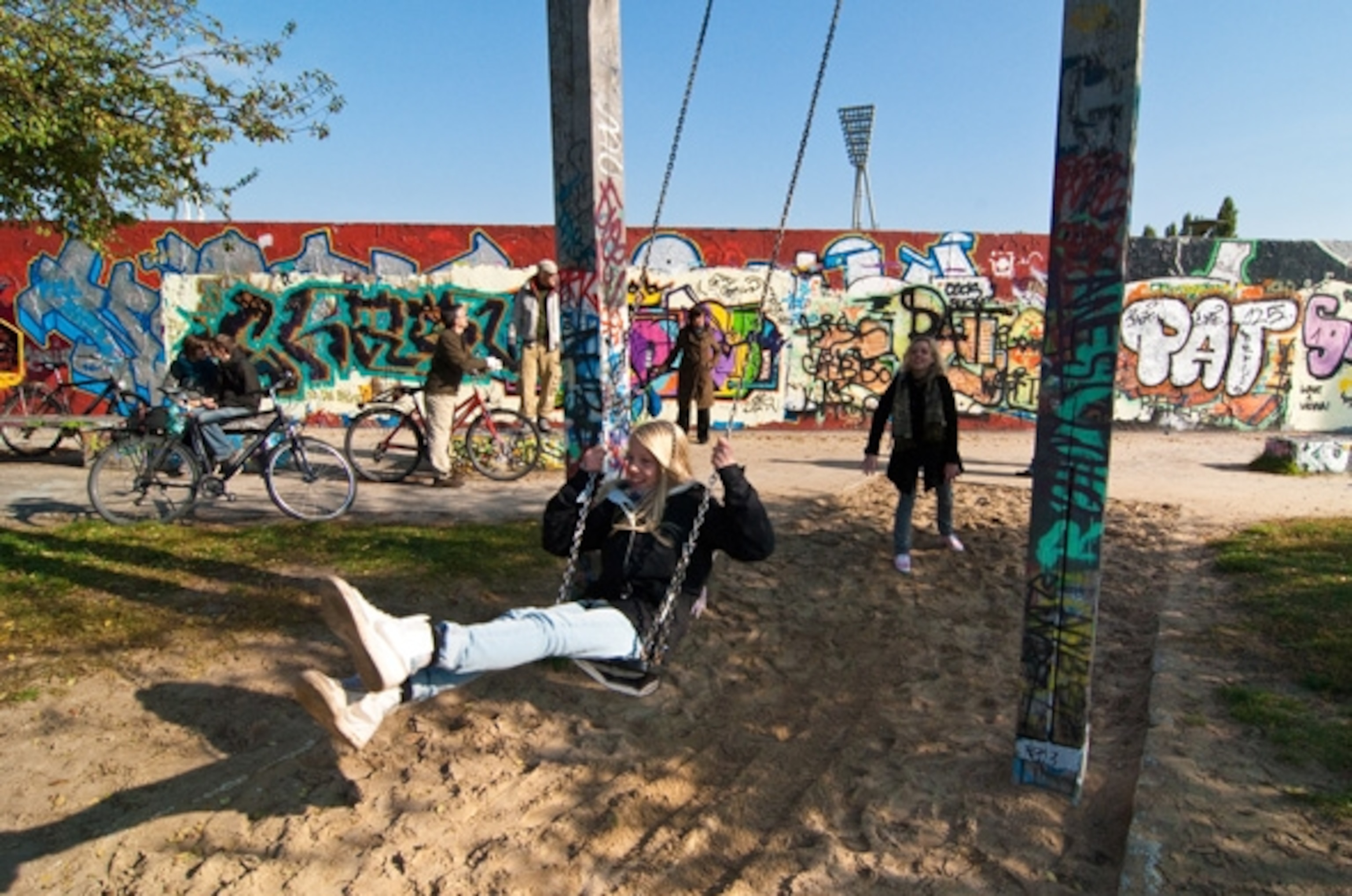
East Meets West in Berlin
It’s difficult to imagine what this city was like in the early 1960s, when the 87-mile-long Berlin Wall was intact and bristling with barbed wire and gun emplacements.
So desperate were they to cross to the West, East Berliners tried such tactics as hot-air ballooning, tunneling, and hiding in hollowed-out car panels. Many were shot for their efforts.
Today, the wall has essentially been shattered into tiny bits, now scattered as souvenirs around the world. You can navigate its former route by guided Segway, walking, or “video bus” tours. Or hike or bike the Berlin Wall Trail, marked by signs and special cobblestones that trace the wall’s former path.
Ask the kids to lead the way with a street map or handheld GPS-based MauerGuide. Only three small sections of the concrete wall remain, now safeguarded as national historic treasures.
A remnant on Bernauer Strasse is seen from a viewing tower that also shows old black-and-white documentaries of people trying to escape East Berlin. The East Side Gallery showcases the work of more than 100 international artists commissioned to cover the wall in striking murals and graffiti.
Another one of the remains is between Potsdamer Platz and Checkpoint Charlie, once the key crossing point between East and West used by foreign diplomats and military.
A museum is nearby, and kids will be able to travel back to a long-lost era through escape apparatuses such as a hollowed-out surfboard, and films of the divided Berliners in paroxysms of celebration. And they will get an important lesson here — the fall of the wall is a symbol of how humanity’s hunger for freedom can topple authoritarianism.
When the wall came down in 1990, East Berlin was a dour warren of bombed-out buildings, courtyards filled with rusty cars, and shabby apartments. Now East and West are virtually indistinguishable, though cross a street in Berlin and you’ll see a quaint echo of Communist yesterday: the now cherished little green and red men called Ampelmännchen who signal walk/don’t walk.
“Many who live in the East have a selective memory, a deep nostalgia for the good old DDR [East Germany],” says journalist Cornelia Höhling, a native East Berliner. “This includes the Ampel men and the old Trabi cars. Everything else is disappearing quickly.”
- National Geographic Expeditions
You can explore historic East Berlin in a Trabi, the cute car manufactured during Communist days. “There was a shortage of steel in those days, so the shell is made from cotton resin,”says Trabi-Safari manager Simone Matern. Led by a guide, you drive the Trabi on a tour that passes the site of Hitler’s bunker, the Reichstag, and Karl-Marx-Allee, with its imposing socialist realist architecture.
This piece, adapted from Keith Bellows’s book, 100 Places That Can Change Your Child’s Life, appeared in the May 2013 issue of National Geographic Traveler magazine.
Related:
National Geographic Travel Guide to Berlin
- I Heart My City: Yvonne’s Berlin
- National Geographic Travel Berlin Landmarks Guide
